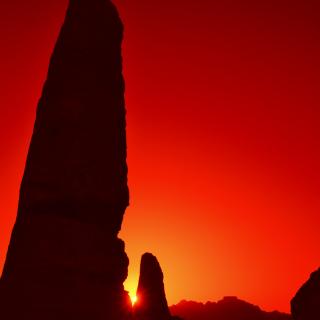MURATORE, M.F.; Gangui, A.; Belmonte, J.A.; Cabrera, C.
Referencia bibliográfica
Cosmovisiones
Fecha de publicación:
9
2024
Número de citas referidas
0
Descripción
This work is a study of the relationship between astronomy and landscape focused on the orientation of Christian churches of the three main Manorial (Señorío) Islands of the Canary archipelago (Spain): Lanzarote, La Gomera and Fuerteventura. As a background, we have the information provided by the texts of early Christian writers, which imposed that churches should be oriented towards the east.
We carried out a comparative study between these islands to verify if the orientation patterns of the temples keep any relationship with each other, or with those of the churches of continental Europe. We are interested in exploring to what extent the indications of the early texts on Christian architecture were respected and to what degree the temples are eventually oriented following different alignments, for example according to pre-existing aboriginal traditions.We are also interested in knowing if there exist churches that are oriented towards points of the horizon on which the Sun rises on the day of the patronal feasts, since that custom was suggested in several previous studies. The analysis of the few cases in which this calendrical coincidence was verified in Lanzarote and La Gomera, is now increased with half a hundred churches that were measured in Fuerteventura.
The fieldwork that supports our comparative study is based on the measurement of the precise location coordinates, axis' azimuth and angular height of the horizon for most of the churches of the three islands, which amounts to about 120 sets of measurements. For the study of the sample, we have employed various analyses, both statistical, as well as calendric and orographic.
Our results show that on all the islands, the pattern of double orientations is repeated, which contemplates the canonical tradition of orienting the altars of churches within the solar range (pointing either eastward or westward). Very few cases also occur where it is possible to identify constructions whose orientation follows solstitial patterns, perhaps as imitation of aboriginal worship. But this double pattern also includes a high proportion of churches with orientations far from this range. An example is Lanzarote and Fuerteventura, both islands subjected to the same flow of the prevailing trade winds in the region, but each with its own characteristics. Another example is given by the particular orography of deep ravines of La Gomera, which determines the orientation of the temples located in those geographical accidents.
In this paper we show how the combination of elements of the land- and skyscape can, with a high degree of probability, offer a satisfactory explanation to the particular orientation of these insular centres of worship, which were built during the first decades after the European conquest.
Proyectos relacionados

Arqueoastronomía
Este Proyecto tiene como objetivo fundamental determinar la importancia de la astronomía como parte integrante de la cultura y de la civilización desde el Paleolítico a nuestros días. El interés del grupo se centra, en especial, en los pueblos del antiguo ámbito Mediterráneo desde el Atlántico al Oriente Medio, con una dedicación especial a España
Juan Antonio
Belmonte Avilés